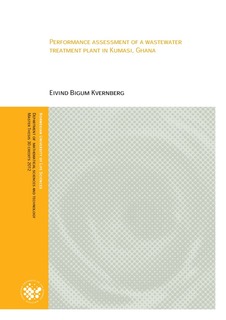Performance assessment of a wastewater treatment plant in Kumasi, Ghana
Master thesis

View/
Date
2012-10-03Metadata
Show full item recordCollections
- Master's theses (RealTek) [1722]
Abstract
Developing countries experience a huge gap in the coverage of collection and treatment of domestic wastewater. Where wastewater treatment facilities exist, they often work below design standards. This leads to the discharge of pollutants into natural water bodies, creating a negative impact on the environment and human health.
In this study, a performance assessment of the Kwame Nkrumah University of Science and Technology (KNUST) wastewater treatment plant in Kumasi, Ghana was carried out from February to March 2012. The main objective of the study was to assess the performance of the treatment plant with respect to the removal of microbial and chemical pollutants. Daily samples were collected at critical treatment steps of the plant, and analysed for chemical, physical and microbial parameters.
The study showed that the KNUST wastewater treatment plant is running sub-optimally in the removal of pollutants harmful to the environment and human health. The concentrations of E. coli, TFC and BOD all exceeded the benchmark concentration levels acceptable to the Environmental Protection Agency (EPA) of Ghana. The poor removal of E. coli/TFC (0.55 log) was particularly alarming, as it proved that the plant does little to reduce microbial health risks. Overloading of the plant beyond its design capacity and poor maintenance practices were identified to be the main causes of the plant’s poor performance.
Given the cost of running the plant, it is essential that improvements are made to increase the performance. Possible improvements must as a minimum follow criteria such as low investment and maintenance costs, increase of the plant’s hydraulic capacity and be easy to operate and maintain.